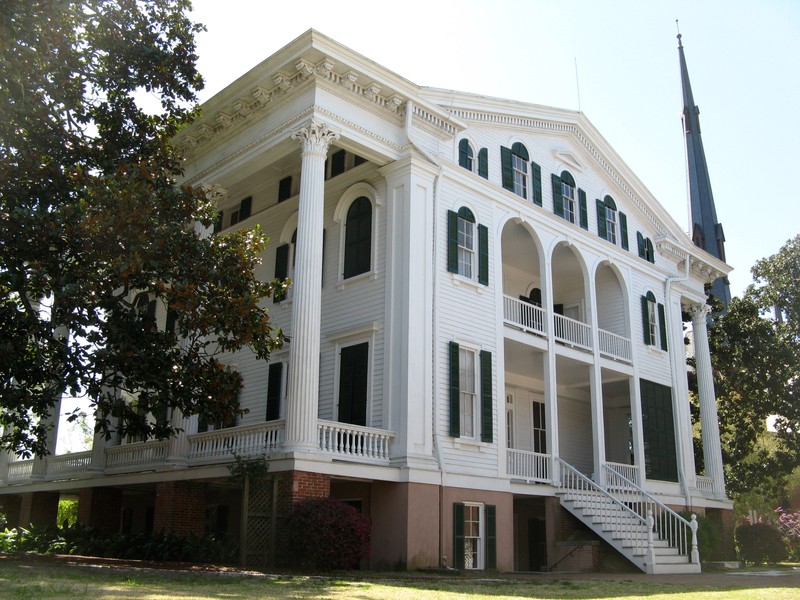Bellamy Mansion and Museum
Introduction
Text-to-speech Audio
Images
The outdoor section view of the Bellamy Mansion after it had been restored.

Backstory and Context
Text-to-speech Audio
The story of the Bellamy Mansion is one of the most poignant and interesting in the area. For over 150 years, the house has been the site of the two architects who built it, many slave laborers, and many people who have shaped and carved the story of Wilmington, North Carolina.
The twenty-two room Bellamy Mansion was designed with Greek revival and Italianate styling. The mansion was constructed by enslaved skilled carpenters, as well as local freed Black artisans. James F. Post, an architect from Wilmington, North Carolina was hired in 1859 to build the mansion. In May 1859, Post hired Rufus Bunnell to be his assistant architect.
It is not clear where the style for an elaborate structure came from, however, it is believed Belle, the first of the Bellamy children may have come up with the idea. Belle studied in South Carolina, where she took a liking to a home nearby that may have inspired the homes design. She shared her ideas with Dr. Bellamy and then with Bunnell. Excavation of the site and the foundation was laid in October 1859.
Many of the supplies to build the home were ordered from New York. The property also consisted of slave quarters and a small carriage house. The plaster moldings of the interior of the main house and extensive woodwork throughout the home were completed by William B. Gould and other slaves and artisans.
Although he wanted the mansion to be constructed in a classic style with an old reliable fashion, Dr. Bellamy was also interested in modern utilities and innovations. He believed these would allow his family to live in comfort. Therefore, although they were uncommon, the house was equipped with many features that were not seen in mass production at the time. These features allowed the home to stand out from other constructions in Wilmington during this time period.
Some modern features included a specially designed ventilation
system helped to keep the mansion a comfortable temperature, luxurious wood,
iron and metal works, stylish rugs, furniture and décor. With such a large
number of people living in the mansion, Dr. Bellamy needed the home to be both
modern and comforting.
As the area lost more and more of its historical homes, the home became even more important to the family:
It took nearly twenty years, but the rest of the house was preserved and restored to its original beauty.Another great-grandchild of John D. and Eliza Bellamy, Robert R. Bellamy II, donated money to purchase the adjoining lot (the site of a house that burned down in 1980) to create parking for the mansion. All the while, fundraising efforts continued for the interior restoration.
